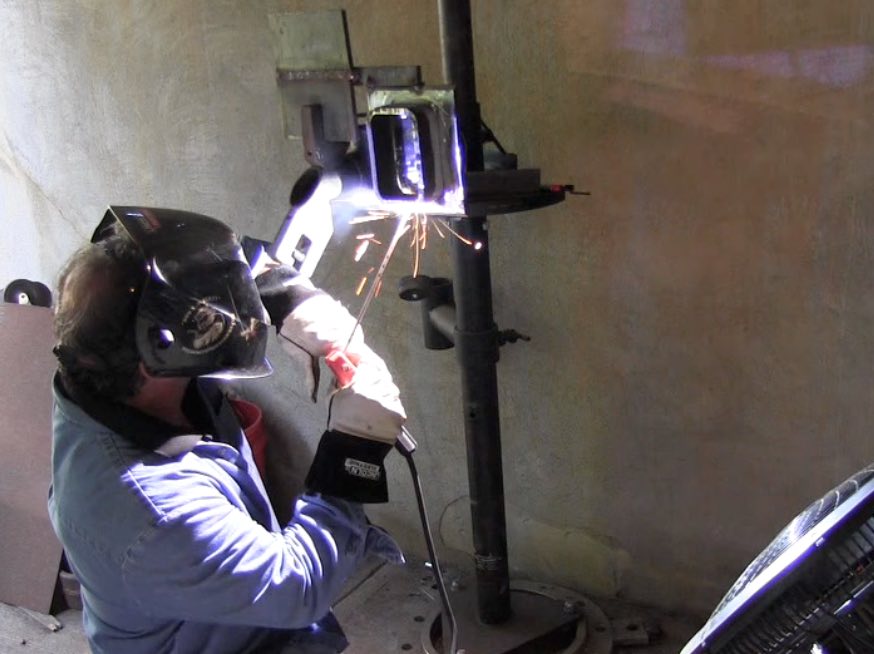7018 Welding in All positions
7018 Welding is something every welding student should concentrate on.
Because even if you want to weld pipe for a career, you will probably be called upon to weld on pipe supports, pipe hangers, and pipe attachments that are made from Structural Steel like wide flange, or Box Tubing.
watch more stick welding videos
For this video, I chose a piece of box tubing that I used in a previous video where I did a 3 pass fillet weld right in front of me on the welding table.
But structural welds like this done on the job site are done in position and not on a bench. So now its time to position the weld to simulate a field weld...
And that makes for 4f overhead, 3f vertical, and 2f horizontal 7018 welding.

Some factoids about 7018 welding
- 7018 rods are also known as "low hydrogen" rods and either need to be fresh out of the box, or kept in a rod oven to maintain the low hydrogen level. If they are left out, they still weld ok, but are not ok for coded welds that require low hydrogen electrodes.
- there are strict time limits in welding codes for how long a 7018 rod can be left outside a rod oven before it must be re-baked for a prescribed period of time.
- the second to the last digit in 7018 is 1 and that indicates that it is an "all position" rod. But there are also higher strength low hydrogen electrodes like 11018. (7018 rods have a minimum 70k tensile ...11018 have min 110k tensile strength)
- A welding machine that will burn a 7018 1/8" (3.2mm) rod well at 140 amps is not limited in the thickness of metal that can be welded.
- That means this little Lincoln Powermig 210mp that only weighs about 40 lbs is capable of welding multipass welds on very thick steel...and that is the age we live in...pretty amazing.

What is CLAMS?
Clams is an easy way to remember the important variables for any stick welding.
C is for Current... what is the right welding polarity and amperage for application? 7018 rods are mostly intended to be run on reverse polarity..thats dcep electrode positive. and to get in the ball park on amperage for 7018 rods, just take the diameter and convert to a decimal. 1/8" = .125" and thats your amperage.
Amperage required depends on diameter of rod but also position and thickness of metal welded so 125 is just to get you started. There are times with 125 amps is too hot like vertical up on 1/4" or thinner steel.
And there are times when 125 amps is not quite hot enough like for flat or horizontal welding on thick steel.
L is for Length of arc...Happiness is a tight arc. when folks ask be about 7018 welding in overhead and vertical, my best advise is " Set the machine hot enough that the rod wont stick even with a tight arc...Then hold a tight arc"
A is for Angle... The angle of the electrode does make a difference in bead profile and penetration but fortunately, its very forgiving. for horizontal , overhead , and flat welding, Shoot for a slight drag angle. For vertical uphill welding, a dead nuts 90 degree angle or slight push angle works.
M is for manipulation of electrode...for 7018 welds, I use a tiny bit of wiggle, even for stringers. But it is not necessary. Some welding procedures limit electrode manipulation.
S is for speed of travel...Travel speed is relatively slow when welding vertical uphill. and much quicker for overhead, horizontal and flat. Watch those edges to make sure you go just slow enough to prevent undercut.













